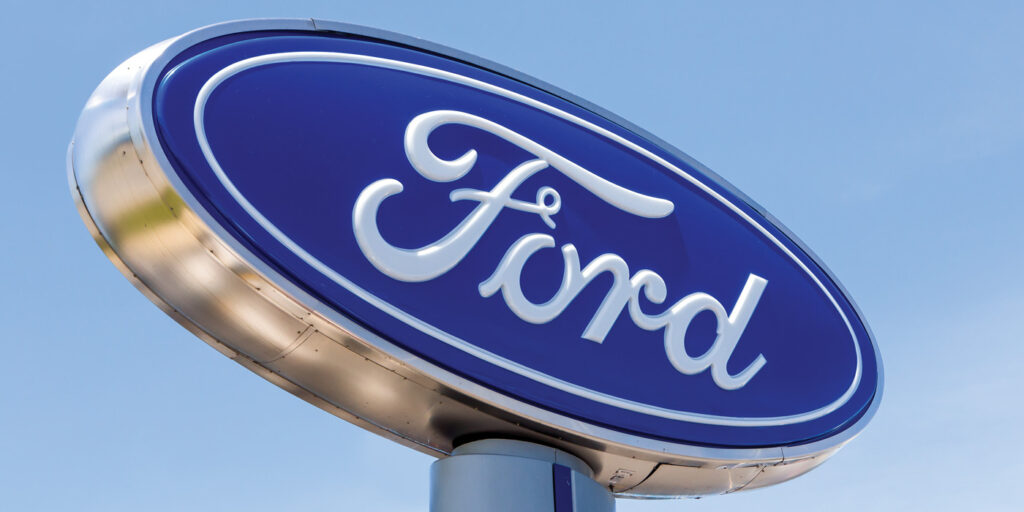The first of the Ford “modular” engines was a 4.6-liter V-8 that appeared in the 1991 Lincoln Town Car. The family soon grew into six unique displacements, including a V-10. Three decades later, the modular family is still around, most popularly in the current 5-liter “Coyote” trim.
Let’s look back at some of these original engines, the vehicles they powered and a few of the reasons we still hear about this engine family on a regular basis.
But first, a disclaimer: The “modular” name doesn’t refer to parts interchangeability, although some of these engine designs share common features. In this case, “modular” refers to the manufacturing processes used at the Romeo, Windsor and Essex engine plants to produce these engines quickly for a wide range of platforms. Each of these engines has distinct design features, and some need to be catalogued carefully – utilizing VIN, application and model-year information to properly identify components.
The original 4.6-liter was a two-valve SOHC V-8 engine found in the Town Car, Crown Victoria and Grand Marquis. The 4.6-liter was designed as a replacement for the old pushrod 5-liter and 5.8-liter (aka the “302” and “351”), a trend that continued as the pushrod engine slowly disappeared from the Thunderbird, Mustang and F-Series trucks throughout the mid to late 1990s. These early engines were built in Romeo, Michigan, and Windsor, Ontario, and the two have distinctly different timing drives and cylinder-head designs.
Identifying Romeo-built and Windsor-built 4.6-liter engines can be as simple as decoding a VIN – providing the engine is still in its original vehicle. Unfortunately, Ford chose to identify the Romeo engines with a “W” in the 8th VIN position, while the Windsor engine was assigned the number “6”!
Looking at the engines themselves also gives a few clear clues, in case you’re dealing with an engine “in the wild,” or a possible transplant. The valve covers on the Romeo engine are held down with 11 bolts, while Windsors feature 13/14 bolt patterns. Beneath the timing covers, you’ll also find that Romeo cam gears are bolted to the camshaft, and Windsor cam gears are pressed onto their shafts. Even bare blocks can be identified easily by locating the “R” or “W” casting marks on each engine – and this time “W” actually means WINDSOR!
F-Series trucks received a new modular option in 1997 in the form of the 5.4-liter, another two-valve SOHC V-8. The same year, E-Series vans were the first to receive the new modular 6.8-liter V-10. These engines were manufactured in the two Canadian plants, so there are no Romeo versions. These modular truck engines became known as the “Triton” series, which became a point of confusion a few years later when Ford introduced a THREE-valve cylinder-head design to the family.
Triton would seem to indicate “three” of something, just like tricycles have three wheels or triangles have three sides, but the name pre-dates the first of the three-valve designs introduced in 2004. Triton truck engines can be found in both two- and three-valve versions, and the last 4.6-liter modular engine (produced in 2014) actually was a two-valve Triton engine.
In addition to the trucks, three-valve engines were found in Mustangs and SUVs, but the modular family also included a series of four-valve DOHC engines in both 4.6-liter and 5.4-liter displacements. These were fit primarily in SVT, Shelby and other performance-oriented vehicles, but the Lincoln lineup also received the four-valve DOHC treatment periodically throughout the modular years. The current 5-liter Coyote continues this 4V DOHC tradition, along with its derivative 5.2-liter Voodoo/Predator, and 5.8-liter Trinity cousins.
The 4.6-, 5.4- and 6.8-liter engines were plagued with spark plug issues in both the two-valve and three-valve versions. 1997-2008 modular two-valve engines with aluminum cylinder heads were prone to stripping spark plug threads, often ejecting the spark plug forcefully from its cylinder port.
The three-valve design did not have thread-stripping issues, but the unique two-piece spark plug that Ford used in the three-valve engines from 2004-2007 has a tendency to snap in half during removal, leaving a difficult-to-remove stump of electrode shell at the bottom of the spark plug well. Several tool companies have developed plug-removal kits for the 3V vehicles, and thread-repair kits for the 2V applications. Ford redesigned the 3V heads (and spark plugs) for 2008, and has since upgraded the plugs specified for the 2004-2007 engines. Aftermarket companies also have developed one-piece replacement spark plugs for these applications, which decreases the chances of that tune-up going horribly wrong!
Even though these modular engines have been around for a long time, the applications in which they originally were installed lend themselves to longevity. They still are present in fleets, from taxis and police cars to cargo vans and work trucks. Of course, modular Mustangs of all varieties continue to be enthusiast favorites, from daily driving to competition at drag strips, autocross and circle-track events. The secondary market for the Crown Victoria also includes motorsports, as they have become the preferred demolition-derby car in most full-size classes, and there are even racing series exclusively for P71 (police-package) Vics!













